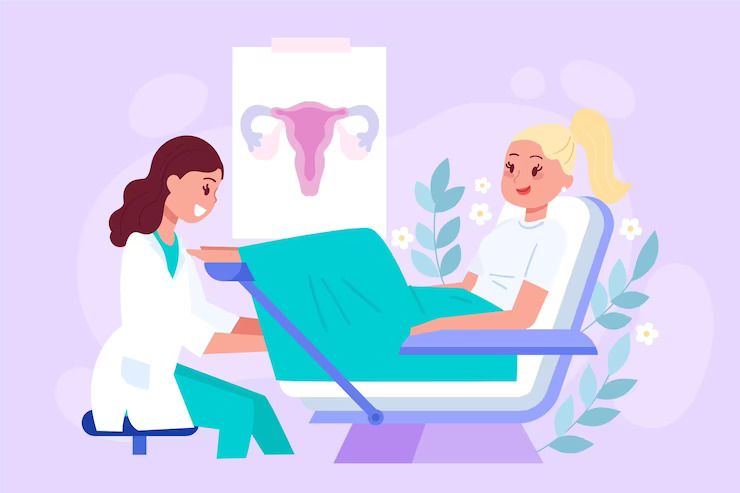Ovarian cancer affects the ovaries, the female reproductive organs responsible for egg production. Unfortunately, it is not detected often in the initial stage, making treatment more challenging. However, women with ovarian cancer have access to a variety of treatment options, and treatment outcomes can be improved through early detection and management. In this comprehensive guide, we will discuss the various ovarian cancer treatment options, including surgery, chemotherapy, radiation therapy, targeted therapy, and immunotherapy. We will also discuss the various stages of ovarian cancer and how stage-specific treatments may vary.
Stages of Ovarian Cancer
Before discussing the different treatment options, it is essential to understand the various stages of ovarian cancer. It has four major stages, with stage 1 being the earliest and stage 4 being the most advanced.
Stage 1 – Cancer is confined to one or both ovaries at this stage.
Stage 2 – Cancer has spread to additional pelvic organs, such as the uterus or fallopian tubes.
Stage 3 – Cancer has spread to the abdomen or lymph nodes in the abdomen.
Stage 4 – Cancer has spread to other organs and tissues, including the liver, lungs, and bones.
Options for the Treatment of Ovarian Cancer
Surgery
Surgical intervention is the primary treatment for ovarian cancer, especially for women in stages 1 and 2. The objective of surgery is to treat cancer while preserving the reproductive organs and surrounding tissues of the patient. In certain instances, a hysterectomy (uterine removal) may be required.
The surgeon may also remove lymph nodes during surgery in order to determine if the cancer has spread beyond the ovaries. This data can assist in guiding future treatment decisions.
Chemotherapy
Chemotherapy is a treatment option that kills cancer cells using drugs. Typically, it is administered after surgery to eliminate any remaining cancer cells and lower the risk of recurrence. Typically, chemotherapy drugs are administered intravenously (IV) or directly into the abdominal cavity (intraperitoneal chemotherapy).
The side effects of chemotherapy include nausea, vomiting, hair loss, and fatigue. Nevertheless, these side effects are frequently treatable with medication and supportive care.
Radiation Treatment
Radiation therapy kills cancer cells with high-energy X-rays. In certain situations, such as when the cancer has spread to other parts of the body, it may be used to treat ovarian cancer.
The side effects of radiation therapy can include skin irritation, fatigue, and digestive issues. However, these side effects are typically transient and treatable with medication and supportive care.
Targeted Treatment
Targeted therapy is a type of treatment in which drugs are used to target specific proteins or pathways involved in the growth and spread of cancer cells. Traditional chemotherapy may be more effective and have fewer side effects than these medications.
Angiogenesis inhibitors are one type of targeted ovarian cancer treatment. These drugs inhibit the formation of new blood vessels that supply cancer cells with oxygen and nutrients, thereby slowing or stopping their growth.
The side effects of targeted therapy can include nausea, diarrhea, and skin issues. However, these side effects are typically milder than those caused by chemotherapy.
Immunotherapy
Immunotherapy is a treatment that employs the body’s immune system to combat cancer. It functions by targeting proteins on the surface of cancer cells that allow them to avoid immune system detection.
Immune checkpoint inhibitors are a type of immunotherapy utilised to treat ovarian cancer. These drugs inhibit proteins on cancer cells that prevent the immune system from attacking them, thereby allowing the immune system to identify and destroy cancer cells.
Immunotherapy’s side effects can include fatigue, nausea, and skin issues. However, these side effects are typically milder than those caused by chemotherapy.
Combinational Treatment
Combination therapy is the use of two or more types of treatment to treat ovarian cancer, such as surgery and chemotherapy. Combination therapy may be required for women with advanced or recurrent ovarian cancer, as it can be more effective than a single treatment alone.
Clinical Trials
Clinical trials are research studies that test new ovarian cancer treatments or treatment combinations. Clinical trials can provide access to innovative treatments that may not be available elsewhere, as well as contribute to a greater understanding of ovarian cancer and its treatment.
It is important to discuss with your physician whether participation in a clinical trial is an option for you. Your physician can help you comprehend the potential risks and benefits of clinical trial participation.
Conclusion:
To sum it up, Ovarian cancer can be a difficult disease to treat, but there are a number of available options. The optimal ovarian cancer treatment depends on the cancer’s stage, as well as the woman’s age, and health condition. If you or a loved one has been diagnosed with ovarian cancer, it is essential to collaborate closely with your healthcare team to develop an individualised treatment plan. You can always contact hospitals like Max Healthcare. It is a premier tertiary care centre for ovarian cancer treatment, women with ovarian cancer can attain the best possible prognosis and quality of life through early detection and proper treatment.
Read more health blogs about:
https://www.gettoplists.com/preparing-for-knee-surgery-a-comprehensive-checklist-for-patients/




